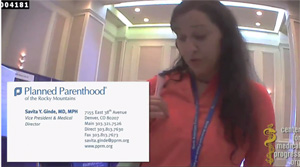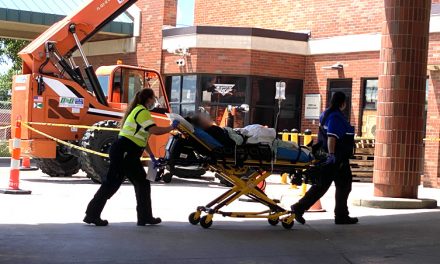By Cheryl Sullenger
Last week the rural northern state of South Dakota shook the nation as it passed the first ban on abortion since the landmark 1973 Roe v. Wade Supreme Court decision that decriminalized abortion. This week, Mississippi passed a similar abortion ban out of committee and onto their House. That state’s governor has already indicated that, if passed, he will sign the bill into law.
South Dakota and Mississippi have become leaders in a growing movement to challenge the 33-year old abortion case law head on. Seven other states are currently considering similar legislation, including Ohio, Tennessee, Kentucky, Indiana, Georgia, South Carolina, and most recently, Missouri. The future of Roe is now in doubt.
Encouraged by their impact on the last presidential election and energized by the new composition of the U.S. Supreme Court, pro-lifers are flexing their newly-found political muscle to affect changes that could only be dreamed of just five years ago.
More pro-life legislation than ever, from parental notification to clinic regulations, continues to flood the statehouses across the nation, giving pro-life forces a great boost in morale. But these incremental successes will never achieve total victory, and pro-life lawmakers are beginning to recognize that.
The Holy Grail of the pro-life movement has always been to overturn Roe v. Wade. For decades that possibility seemed remote. Now, that possibility is fast becoming inevitability — one that makes some from both sides on both sides of the abortion matter uneasy.
There has long been concern that to strike the decision outright would cause the issue of abortion to revert back to the existing laws on the books in the fifty states. Some states would allow abortion, while others would prohibit it. This would create a division in the nation not experienced since the Missouri Compromise designated states as “slave” and “free.”
However, the South Dakota abortion ban and others making their way through state legislatures have the potential to do more than merely cast the lots of future generations to the whims of the states. It has the promise plugging the “Blackmun Hole,” a startling admission that if personhood could be established for the pre-born, the arguments in Roe would collapse.
Justice Harry Blackmun wrote in the majority opinion for Roe v. Wade in 1973, “The appellee and certain amici [pro-lifers] argue that the fetus is a ‘person’ within the language and meaning of the Fourteenth Amendment. In support of this, they outline at length and in detail the well-known facts of fetal development. If this suggestion of personhood is established, the appellant’s case, of course, collapses, for the fetus’ right to life would then be guaranteed specifically by the Amendment.”
During Blackmun’s time, the “well-known facts of fetal development” were a far cry from what is known today. Ultrasonography and DNA testing were yet to be invented. In 1973, most held that “life” began at “quickening,” or when a woman first feels movement of the baby in the womb at 18 to 24 weeks. Some even held to the “Recapitulation Theory,” the scientifically debunked notion that the human baby underwent his entire evolutionary cycle in the womb, being first a simple one-celled creature, then later a fish, then later a mammal, then finally a human, which of course now seems absurd.
The science of fetology in 1973 was not able to prove, as it can now, that a fully human and unique individual exists at the moment of fertilization and continues to grow through various stages of development in a continuum (barring tragedy) until natural death from old age.
With the advent of a newly aligned Supreme Court, this is the first time in over three decades, that there is any realistic hope that the new information about the humanity of the pre-born can be legally reconsidered, and the matter of personhood revisited.
The South Dakota abortion ban states, “life begins at the time of conception” and again “each human being is totally unique immediately at fertilization.”
If the Court considers the humanity of the pre-born child, for which there is overwhelming scientific evidence, it could restore the legal protections of personhood to the pre-born under the 14th Amendment as Blackmun foretold, stopping abortion immediately in all fifty states!
Conditions for decisive victory are more favorable than they have been in three decades. Polls show that America is increasingly becoming more pro-life, and that trend is especially strong among the younger, post-Roe generation. Pro-life conservatives are enjoying increasing political power. State Legislatures are reflecting the increasingly pro-life will of their constituents by passing an unprecedented flood of abortion restrictions.
Just this week, the Supreme Court gave pro-lifers even more hope by issuing a unanimous 8-0 decision in favor of pro-life protestors, ending for good the 20-year old racketeering suit, NOW v. Scheidler, with left-leaning Justice Breyer issuing the opinion. Not only does this victory release pro-lifers from threat of prosecution as gangsters, but it also signals a new unity under Chief Justice John Roberts that the Court has not previously shown.
Now several states have had enough of the bloodletting and are finally showing that they have the courage to challenge Roe all the way up to the newly reconfigured Supreme Court. Some of these brave efforts may fail. Some abortion bans may never make it out of committee. Those that do will be challenged in court.
But Operation Rescue says, “Bring it on!” Roe is a precedent with feet of clay that cannot hold up under the serious challenges that will soon face it. The “Blackmun Hole” is gaping open and ready for pro-lifers to dance through it and grasp the victory. There can be an end to child-killing through abortion in this nation, if only pro-lifers will have the courage to support those who are leading the way.
Read Text of South Dakota’s HB 1215

Select Page







